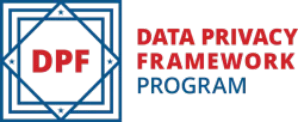April’s here, and you know what that means: spring cleaning. But forget dusty attics and overstuffed closets; your business needs the real decluttering. Think about it. How many outdated processes, clunky tools, and inefficient workflows are lurking in your daily operations, slowing everything down? If employees are blindly following “the way it’s always been done,” you’ve got a serious problem. Sticking with outdated methods is like expecting a flip phone from 2001 to outshine the iPhone 16 Pro. (Android users, feel free to battle it out in the comments! 😊) Your business deserves better.
It’s time to toss the inefficiencies, wipe away the bottlenecks, and freshen up operations. A clean, streamlined, high-performing business is not a luxury. It’s a necessity. Let’s dive into 10 strategies to clear out the operational clutter and set your company up for serious success.
1. Audit Everything and Be Ruthless
Most businesses accumulate operational baggage over time. Policies, software, and habits that once made sense might now be obstacles. Take a hard look at:
- Redundant workflows – Are employees jumping through unnecessary hoops? Cut steps that do not add value.
- Ineffective tools – Are outdated platforms causing frustration? Upgrade to solutions that actually support productivity.
- Communication breakdowns – Are messages getting lost in email chains? Simplify with a centralized communication hub.
Run an internal audit by gathering feedback from employees who work in the systems daily. They know what works and what slows them down. Data-driven decisions based on workflow analysis will help pinpoint the most critical issues to fix first.
2. Ditch the Wrong People in the Wrong Roles
A high-performing team is a well-placed team. When roles do not match strengths, productivity plummets. Behavioral assessments, like those from The Omnia Group, help align people with the right responsibilities. Instead of forcing employees to fit into ill-suited positions, reposition them where they will thrive. A happy, engaged workforce is not just good for morale, it is a productivity powerhouse.
It is also important to reassess job descriptions. Roles evolve, and employees may be struggling because their responsibilities have shifted beyond their skill set. Realign tasks, redefine expectations, and make sure every employee has the right tools to succeed.
3. Automate the Tedious Stuff
If employees are still manually entering data, chasing approvals, or compiling reports by hand, you are burning time and money. Automate:
- Payroll and invoicing – Let software handle calculations and reminders.
- Client follow-ups – Use AI-driven tools to keep leads warm without constant manual check-ins.
- Performance tracking – Get real-time insights without drowning in spreadsheets.
Invest in automation tools that integrate with your current systems. Disjointed tech can create more challenges than it solves. Choose platforms that scale with your business, reducing future headaches.
4. Clarify Accountability with Defined Ownership
When nobody knows who owns what, chaos follows. Make accountability crystal clear:
- Assign ownership for every key process.
- Set measurable goals with deadlines.
- Hold regular check-ins to ensure follow-through.
Encourage leadership at every level. Employees who take ownership of their roles perform better. Provide training, mentorship, and recognition to foster accountability across departments.
5. Upgrade Hiring Practices to Reduce Costly Turnover
Hiring based on your gut might get you someone you connect with but a person who can’t do the job. Instead, use data-driven hiring solutions to identify candidates who fit your culture and role requirements. Behavioral insights help ensure new hires are not just skilled, but also aligned with company values and work styles.
A bad hire costs more than just salary—lost productivity, morale, and rehiring expenses add up quickly. Structure your hiring process with:
- Competency-based interviews.
- Pre-hire behavioral assessments.
- Defined onboarding plans that set employees up for success.
Retaining top talent is just as crucial. Continual development opportunities, clear career progression paths, and strong leadership keep employees engaged long-term.
6. Cut Meetings in Half and Reclaim Productivity
Let’s be honest, most meetings are time vampires. If a problem can be solved in an email, Slack message, or quick call, there is no need for a 60-minute sit-down. To clean up your calendar:
- Eliminate meetings without clear agendas.
- Shorten necessary meetings by setting time limits.
- Encourage asynchronous communication when possible.
Track the cost of meetings. Time is money, and an hour wasted in an unnecessary meeting is an hour not spent on strategic initiatives. Challenge your team to question whether meetings are truly essential.
7. Strengthen Your Operational Foundation with EOS
A clean and efficient business does not happen by accident, it requires a structured system. At The Omnia Group, we run on the Entrepreneurial Operating System (EOS), a proven model that helps businesses gain traction and achieve long-term success. With clear processes, accountability structures, and a focus on continuous improvement, EOS is an effective way to eliminate inefficiencies and build a strong foundation for growth.
Companies using EOS operate with transparency, clarity, and strong leadership. By implementing structured processes, decision-making becomes easier, and everyone in the company moves in the same direction toward growth.
8. Improve Documentation for Seamless Operations
Processes should be clear, documented, and accessible. Many inefficiencies stem from unclear instructions, outdated guides, or knowledge stuck in employees’ heads. Update and streamline documentation by:
- Creating step-by-step guides for key workflows.
- Implementing a company-wide knowledge base.
- Encouraging employees to provide feedback on existing documentation.
Consider leveraging video tutorials or interactive guides. Not everyone learns the same way, and comprehensive documentation ensures consistency across teams, departments, and locations.
9. Streamline Your Tech Stack
A cluttered tech stack slows business growth. Many companies use multiple tools that overlap in function or are underutilized. Conduct a tech audit to:
- Identify software that is no longer needed.
- Consolidate tools to reduce redundancy.
- Train employees on the proper use of technology to maximize efficiency.
Cybersecurity risks also increase with outdated systems. Ensure your tech is up to date and protected against potential threats. A streamlined, secure tech stack improves operations and protects your company’s data.
10. Leverage 40 Years of Expertise for Sustainable Success
Experience matters. With 40 years in business, The Omnia Group has seen countless trends come and go. What has remained constant is the need for businesses to adapt, evolve, and optimize their team along with operations. Learning from an organization with a long-standing track record of success ensures you are not just making changes for today but building a future-proof business.
Trends shift, but smart business decisions withstand market changes. Seeking guidance from seasoned experts can save years of trial and error.
Final Thoughts: A Bold Reset for Explosive Growth
If the Android users didn’t exit stage left after my Apple comment, I am happy you stuck around. Spring cleaning your business is not just about making minor tweaks, it is about rethinking and revitalizing every corner of your operations. Outdated systems, redundant processes, and misaligned teams do not just slow you down, they put a ceiling on your potential. The businesses that thrive are the ones that refuse to stay stagnant.
This is your moment to reset, refocus, and reignite momentum. Audit, automate, streamline, and innovate because the businesses that evolve are the ones that lead. The cluttered, outdated version of your company is holding you back. Sweep it away and watch what happens.
The best version of your business is not just waiting, it is calling. Time to roll up your sleeves and make it happen.























